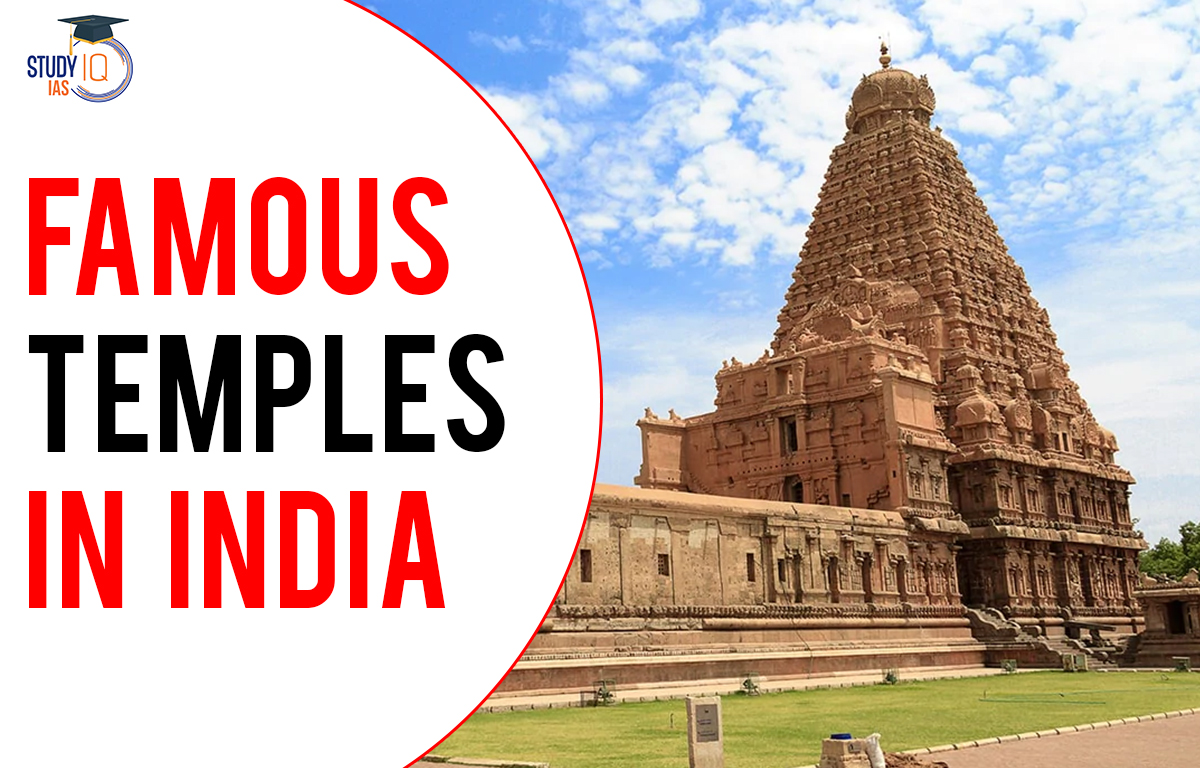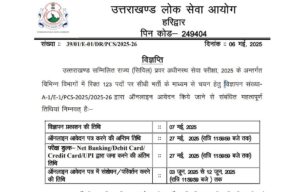Table of Contents
India’s rich tapestry of spirituality and culture is vividly reflected in its numerous temples, each representing a unique blend of architectural brilliance and religious significance. For UPSC aspirants, understanding these temples is essential, as questions related to them often appear in General Studies papers, especially in the context of Indian culture and history.
Famous Temples in India
India is a land of diverse religions and cultures, with Hinduism, Jainism, Buddhism, and Sikhism being among the prominent ones. Temples in India are not only places of worship but also symbols of artistic excellence and historical narratives. Through different historical periods, they offer insights into the region’s religious practices, societal values, and architectural styles.

List of Famous Temples in India
Here’s a complete List of All Famous Temples in India in 2024
| Temple Name | Location |
| Kedarnath Temple | Rudraprayag, Uttarakhand |
| Somnath Temple | Somnath Gujarat |
| Vaishno Devi Temple | Katra, Jammu and Kashmir |
| Ramanathaswamy Temple | Rameshwaram, Tamil Nadu |
| Kashi Vishwanath Temple | Varanasi, Uttar Pradesh |
| Konarak Sun Temple | Konark, Odisha |
| Shri Jagannath Temple | Puri, Odisha |
| Yamunotri Temple | Uttarkashi, Uttarakhand |
| Meenakshi Temple | Madurai, Tamil Nadu |
| Amarnath Cave Temple | Jammu and Kashmir |
| Lingaraja Temple | Bhubaneswar, Odisha |
| Tirupati Balaji Temple | Tirumala, Andhra Pradesh |
| Kanchipuram Temples | Kanchipuram, Tamil Nadu |
| Ranakpur Temple | Pali, Rajasthan |
| Shirdi Sai Baba Temple | Shirdi, Maharashtra |
| Shri Padmanabhaswamy Temple | Trivandrum, Kerala |
| Dwarkadhish Temple | Dwarka, Gujarat |
| Laxminarayan Temple | Delhi |
| Siddhivinayak Temple | Mumbai, Maharashtra |
| Gangotri Temple | Uttarkashi, Uttarakhand |
| Iskcon Temple | Vrindavan, Uttar Pradesh |
| Mahabodhi Temple | Gaya, Bihar |
| Kamakhya Temple | Guwahati, Assam |
| Khajuraho Temple | Khajuraho, Madhya Pradesh |
| Virupaksha Temple | Hampi, Karnataka |
| Akshardham Temple | Delhi |
| Shri Digambar Jain Lal Mandir | Delhi |
| Sanchi Stupa | Sanchi, Madhya Pradesh |
| Golden Temple | Amritsar, Punjab |
Top 10 Famous Temples in India
| Temple Name | Location | Significance | Historical Context |
|---|---|---|---|
| Somnath Temple | Somnath, Gujarat | One of the twelve Jyotirlingas dedicated to Lord Shiva. | The temple has been destroyed and rebuilt several times, with the current structure reconstructed in 1951 by Sardar Vallabhbhai Patel. It symbolizes the resilience and devotion of the Hindu community. |
| Shri Kashi Vishwanath Temple | Varanasi, Uttar Pradesh | Dedicated to Lord Shiva, one of the twelve Jyotirlingas, located on the banks of the Ganges River. | The temple has faced destruction and reconstruction throughout history, most notably by Aurangzeb. The current structure was rebuilt in the 18th century by Ahilyabai Holkar of Indore, reflecting its enduring significance. |
| Tirupati Balaji Temple | Tirumala, Andhra Pradesh | Known as Sri Venkateswara Swami Vaari Temple, dedicated to Lord Vishnu, a major pilgrimage site. | The temple’s origins are ancient, with Lord Vishnu believed to have descended to earth. It is renowned for its annual Brahmotsavam festival and the significant offerings made by devotees. |
| Sree Padmanabhaswamy Temple | Thiruvananthapuram, Kerala | Dedicated to Lord Vishnu, it is one of the 108 Divya Desams, significant in Vaishnavism. | The temple is considered to have ancient origins and is associated with the royal family of Travancore. Its architectural splendor and treasures make it a prominent site in Vaishnavite worship. |
| Shri Jagannath Temple | Puri, Odisha | Dedicated to Lord Jagannath, a form of Lord Krishna, known for the annual Ratha Yatra festival. | The temple is part of the Char Dham pilgrimage and dates back to the 12th century. The Ratha Yatra, where the deities are paraded on large chariots, is a major event drawing millions of devotees. |
| Amarnath Cave Temple | Anantnag, Jammu & Kashmir | Dedicated to Lord Shiva, features a naturally occurring Shiva Lingam formed by ice. | The cave temple is accessible only during the summer months due to heavy snow. It holds significant mythological importance and is surrounded by stunning snow-capped peaks and glaciers. |
| Kedarnath Temple | Kedarnath, Uttarakhand | One of the twelve Jyotirlingas dedicated to Lord Shiva, located at a high altitude. | The temple is mentioned in the Skanda Purana and is a crucial part of the Char Dham pilgrimage. It is accessible only in the summer months due to its remote and snowy location. |
| Badrinath Temple | Badrinath, Uttarakhand | Dedicated to Lord Vishnu, a key site in the Char Dham Yatra. | The temple’s origins are linked to Adi Shankaracharya, who is said to have discovered the deity’s idol. It remains a vital site for devotees seeking spiritual blessings and is a central attraction in the town of Badrinath. |
| Gangotri Temple | Gangotri, Uttarkashi, Uttarakhand | Dedicated to Goddess Ganga, it is the temple where the Ganges River is honored. | The temple is located near the source of the Ganges River, known as Bhagirathi. It is an essential site for pilgrimage and religious ceremonies, built to honor the sacred river. |
| Konark Sun Temple | Konark, Odisha | Dedicated to the Sun God Surya, renowned for its architectural grandeur resembling a chariot. | Built in the 13th century by King Narasimhadeva I, the temple is a UNESCO World Heritage Site and a masterpiece of Kalinga architecture. Its intricate carvings and chariot-like structure highlight the artistic achievements of the time. |
Famous Temples of India UPSC
For UPSC aspirants, understanding the historical, cultural, and architectural significance of these temples can provide a deeper insight into India’s diverse heritage. These temples are not just religious centers but also serve as important markers of India’s historical evolution, artistic achievements, and societal values. Their study can offer valuable context for questions related to Indian culture, history, and architecture in the UPSC exams.


 List of Districts of India, Check State ...
List of Districts of India, Check State ...
 NMCG takes to Rejuvenate Nathmalpur Bhag...
NMCG takes to Rejuvenate Nathmalpur Bhag...
 UKPSC PCS Recruitment 2025: Notification...
UKPSC PCS Recruitment 2025: Notification...





















